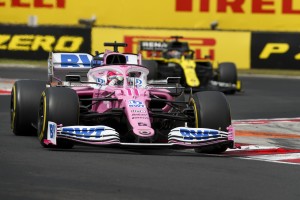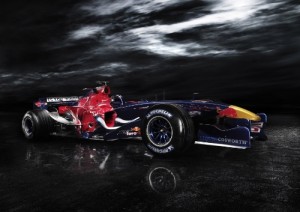One of the main talking points of the current 2020 season is Racing Point – nicknamed the Pink Mercedes. Subsequently, Renault have raised concerns about the legality of their car to the stewards. We are awaiting a decision upon the review of the brake ducts as Racing Point have handed over their current car’s ducts and Mercedes are due to sample a pair from the 2019 car – the Mercedes W10. The stewards are investigating all of this, but unfortunately there is no timescale presently so every race Renault can continue to protest a result or any team if they are unhappy with the result. It is much easier to copy external aerodynamics from images and videos such as wings and floor designs but internal details are much harder which is why brake ducts were the focal point. If their brake ducts are passed clear and are very similar, what stops Red Bull giving their junior team Alpha Tauri their old designs to base next year’s car, similar to what they did prior to 2010? Will 2021 be the return of four Red Bulls to the grid?

Scuderia Toro Rosso, now Alpa Tauri, entered the Formula One grid when Red Bull bought the beloved backmarkers Minardi. Their first car, the STR1, was near enough a carbon copy of the 2005 RB1 whilst Red Bull moved onto the RB2. This preceded the arrival of one of the greatest designers in the history of the sport – Adrian Newey. He moved over from McLaren for 2007 to embark on a new challenge. Controversy ensued that season when the RB3 and STR2 were both designed on the same chassis by Newey. Williams and Spyker felt this was against the concorde agreement, very much on the terms to what Renault are going to the stewards for this season. The FIA classed this is as legal for a customer chassis but the Toro Rosso team then managed the car throughout the season.

GEPA pictures/Red Bull Content Pool // 1329476893572-1682678767 // Usage for editorial use only //
The cars remained identical until 2009. Ironically Toro Rosso was the first Red Bull branded car to win an F1 race in Monza in 2008. Sebastian Vettel, as a result, earned a drive for the Red Bull team alongside Mark Webber. In 2010 Toro Rosso built its first car, the STR5, from scratch as duel-designs had been banned. Adrian Newey and Red Bull Technology had no say on this car due to differing engine suppliers. Since transmission assistance and suspension assistance were introduced in 2013 and 2018 respectively, Red Bull have once again been able to aid their second team. This arrangement is very similar to Haas’ relationship with Ferrari.

An interesting scenario now arises if Racing Point have managed to near enough copy the Mercedes car from last year. Can Alpha Tauri, within regulation, just get the base designs to build their AT02 car on their own chassis? They would not need to take hundreds of photos; owner Helmut Marko probably would get the prints to a certain extent within the rulings. The Red Bull for many seasons has been dubbed the best car on the grid aerodynamically and has cut the deficit to Mercedes around the less power sensitive tracks on the calendar such as Monaco and Hungary. Such circuits have more sectors with low to medium speed flowing corners. Red Bull took a gamble with Honda power and the Japanese manufacturer is beginning to find its footing in the hybrid era. Hopefully now at power tracks like Monza, we will start to see Red Bull competing once again.
Upon all of this would we see the return of four Red Bulls like the mid to late noughties when Toro Rosso entered the grid? A cost-cap has also been agreed for the future so this would assist both teams greatly. Red Bull could make a return in possibly passing on old designs if permitted and as a result Alpha Tauri would spend less on research and design.
Feature Image Courtesy of Red Bull Content Pool

